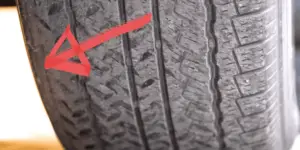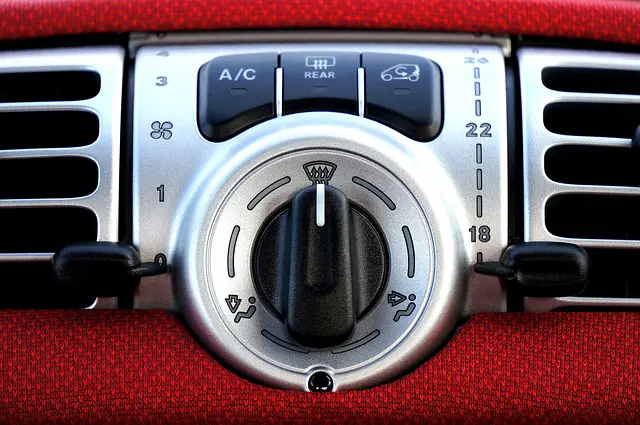
Have you ever noticed your steering wheel spinning freely with no affect on your wheels? It can definitely be a scary problem. The question is, what should you do about it? Let’s examine what to do when a steering wheel spins freely.
A steering wheel may spin freely as a result of a malfunction in the steering system’s mechanisms. These malfunctions could include the serpentine belt, the steering tack, the steering column, a wheel bearing itself, or simply the tire rod. You must fix these malfunctions in order to regain control of the steering wheel and stop it from spinning.
In this article, you will learn all of the most likely causes for a free-spinning steering wheel. We won’t leave you hanging, though; you will also learn about solutions to this problem. We’ll even provide answers to the web’s most often-asked questions on this topic! Let’s begin.
5 Reasons Why a Steering Wheel Spins Freely

There are many potential causes to a spinning steering wheel. The wheel is made to spin of course, but if you’re having trouble controlling the wheels of the vehicle, there is something more serious going on. In order to figure out possible causes, you’ll need to understand how the steering system works.
The steering wheel of a car is actually connected to the shaft. The shaft is a piece of machinery that rotates as the wheel spins. When it rotates, it also spins the pinion of the rack. The rack itself then moves in a straight line to spin the tie rod. It is the tie rod which rotates the wheels of your car!
Think of it as a long, complicated chain. When the first link moves, all of the links attached to it are supposed to follow. However, if one of those links breaks, the connection is lost and movement on one end does not affect movement on the other end!
Therefore, the main reason your wheel is spinning freely is because one of the above-mentioned pieces is broken.
Now that we’ve got that process out of the way, let’s examine the causes for a steering wheel spinning freely more specifically, going piece-by-piece through the steering system. We’ll also tackle some of the potential solutions!
1. Damaged or Broken Steering Column
A steering column is, like we mentioned above, a a very critical part of the system of steering your car. It is supposed to take the motion of the steering wheel and transfer that down to the shaft, which is, in turn, responsible for directing the wheels of the vehicle. If the steering column breaks, you will probably have a hard time turning the steering wheel.
However, it can also be a cause of a wheel that is too easy to spin, with no follow-through. Listen for a clunking or rattling noise as you spin the steering wheel. If you can hear this, chances are, your steering column has broken or is at least contributing to the problem.
Multiple factors can contribute to a steering column breaking. For example, if the power steering belt wears out, it can weaken the steering column or break it. Other issues could be anything from a fluid leak to malfunctions of a pump or blocked hose.
Regardless of how the steering column broke, what you need to do now is decide how to solve the problem! If your steering column breaks, you can always call a professional to fix it. However, if you decide to try and replace the broken part yourself, you need to know that the steering column is made up of parts like the column lock and column bushing.
If all of these are damaged, you’ll be in for a more complex removal and replacing process. However, if you simply need to replace one, the task is a little easier.
2. Broken or Damaged Steering Shaft
Let’s move on to the steering shaft. The steering shaft is a piece of the steering system that transmits torque to steering gears like the gearbox or rack from the steering wheel. If it breaks or damages even partially, it can’t do this effectively.
To identify whether or not this is the problem, listen as you move your steering wheel. If you do not hear the clunking and grinding noises, odds are, you have ruled out the steering column as an issue and may be highlighting an issue with the shaft, instead.
There aren’t many fancy solutions to fixing a broken steering shaft. If the steering shaft breaks, you will need to replace the whole thing. This is a difficult process, because in order to reach the steering shaft, you’ll have to disconnect the gearbox of the steering system. You also need to disconnect the pinion, the rack, and all of the pieces that the shaft connects to.
We recommend that you hire a professional to replace the shaft. If you do decide to do it yourself, make sure you test the steering system before driving.
3. Broken Steering Rack or Tie Rods
The steering rack is a vital component of steering one’s car, as well. It converts the motion of the wheel to steer from a rotating motion to a linear motion. This helps to steer the front vehicle wheels in the same direction as well.
A really important part of this whole process is also the tie rod. The tie rod uses a ball socket to move the gearbox’s force through to the wheel.
One way to identify whether or not there are issues with either the tie rod or the steering rack is to see how loose the wheel is. Instead of listening, this time use your sense of smell. If you smell anything out of the ordinary, it could be an issue with the rack. A damaged rack can cause fluid to leak.
Don’t try to drive your car, even if you still have some control of the wheels, if you sense any of these signs. The problem is necessary to fix if you want to keep driving safely!
If you don’t want to call a mechanic, use a socket wrench to remove the steering rack, then move it’s fixation forward. This is, fortunately, one of the easier fixes!
4. Broken or Damaged Serpentine Belt
A serpentine belt supplies power to different components of the car, including the air conditioning compressor and the alternator. However, if your steering wheel is spinning freely, it’s likely that the serpentine belt isn’t connected to the power steering pump.
To be sure, you can check for an unpleasant squealing sound. If your car overheats in addition to having improper steering, you probably have a serpentine belt problem.
Previously, replacing a damaged serpentine belt was very complicated. You had to unscrew the bolts to remove the old ones, then reattach them. Today, all it takes is rotating the steering system’s tensioner to remove the old belt and place a new one. Remember, if you are not going to call a trained mechanic, make sure you test the steering system solution before going out on the road.
5. Loose or Damaged Power Steering System
Your power steering system, which controls the steering wheel, makes moving the wheels of the car easier. Without it, your steering wheel can get either very heavy and difficult to control or it can spin freely.
Your power steering can become loose from reversed steering lines, fluid leaking, a dry pump, low fluids, or even contaminated fluids.
If you have contaminated fluids, you can use a turkey baster to remove the power steering fluid. Replace it with roughly 8 ounces of cleaning product, which you can find at any auto store. Then test the steering wheel. If it is not a contaminated fluid issue, you will need to consult a professional.
Frequently Asked Questions
Let’s look into some of the other related questions on this topic.
Why is my steering wheel spinning freely?
Your steering wheel might be spinning freely as a result of an issue with the whole steering system. For example, it could be a break in the steering shaft or belt. On the other hand, it could have an issue with looseness in the gear of the steering system. Typically, you need to tighten this gear or replace the faulty part.
How do you know if your steering rack is bad?
One way to know that your steering rack is if you have difficulty turning. Also, if your steering wheel turns all too easily with no results in the actual wheels. You can also expect a steering rack issue if the car overheats or makes grinding sounds.
Can you drive with a loose steering wheel?
Technically, it is possible to drive with a loose steering wheel, but definitely not safe. A loose steering wheel is your first warning that something is wrong with the steering system. You don’t want to wait until that malfunction causes a terrible accident.






![How Many Serpentine Belts Are In A Car? [Answered] serpentine-belt-motorcyle-noise](https://carzaza.com/wp-content/uploads/2023/12/serpentine-belt-motorcyle-noise-300x150.png)






